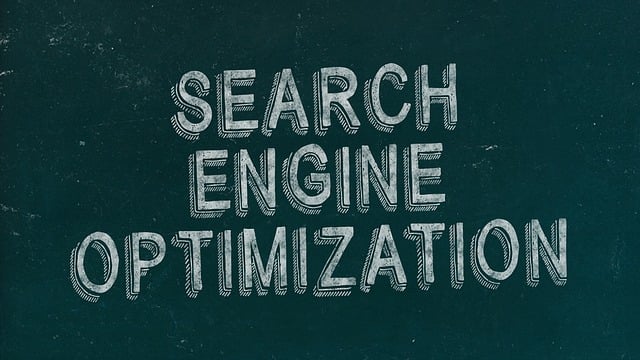Website speed optimization is essential for positive user experiences and online success. Slow loading times impact satisfaction, leading to higher bounce rates and reduced time on page, especially on mobile devices. In Technical SEO, fast load times directly influence search engine rankings as major search engines like Google prioritize efficient websites. Optimizing speed can enhance online visibility and business opportunities. Key steps include using tools like Google PageSpeed Insights to identify bottlenecks, optimizing images and media, improving server response time, leveraging caching, minimizing HTTP requests, and implementing CDNs. Continuous monitoring and testing are vital for maintaining robust Technical SEO practices.
In today’s digital era, website speed optimization is not just a nicety—it’s a competitive advantage. A slow website can drive users away, impacting user experience and hurting your search engine rankings (SEO). This comprehensive guide delves into the crucial aspects of Technical SEO, focusing on how page load time influences your online visibility. We’ll explore essential strategies to identify and resolve bottlenecks, optimize media, enhance server response times, leverage caching, minimize HTTP requests, and harness Content Delivery Networks (CDNs) for global speeds locally.
Understanding Website Speed: The Impact on User Experience and SEO

Website speed optimization is a critical aspect of ensuring a positive user experience and remains an essential element for any successful online presence. Slow-loading websites can significantly impact user satisfaction, with visitors often abandoning sites that take too long to render content. This is particularly true for mobile users, who are more likely to expect instant results due to the convenience and widespread use of smartphones.
From a Technical SEO perspective, website speed plays a pivotal role in search engine rankings. Google, for instance, has explicitly stated that page speed is a factor in its ranking algorithms. A fast-loading site signals to search engines that it is optimized for user experience and can enhance the overall quality of results. Conversely, slow websites may face higher bounce rates, lower time spent on page, and reduced search engine rankings, all of which contribute to decreased online visibility and potential loss of business opportunities.
Technical SEO Fundamentals: How Page Load Time Affects Your Rankings

In the realm of Technical SEO, one of the most impactful factors that influences search engine rankings is page load time. Google and other major search engines prioritize delivering fast-loading web pages to users, as it enhances overall browsing experience. Websites with quicker loading times tend to rank higher in search results, making it a crucial element for any digital strategy. This is because search algorithms consider page speed as a sign of website quality and reliability.
When a webpage loads swiftly, it signals to search engines that the site is optimized and can provide users with timely, valuable content. Conversely, slow-loading pages may indicate technical issues or an inefficient site structure, leading to lower rankings. Therefore, optimizing page load time should be a top priority for any website aiming to excel in Technical SEO, ensuring its online visibility and performance.
Identifying Bottlenecks: Tools for Analyzing Website Performance

Identifying bottlenecks is a crucial step in website speed optimization, especially for those focused on improving their Technical SEO. The first step is to analyze your site’s performance using tools designed to uncover potential slowdowns and inefficiencies. Popular options include Google PageSpeed Insights, GTmetrix, and Pingdom Tools. These tools provide detailed reports, offering insights into load times, resource-loading metrics, and potential issues like large file sizes or poorly optimized images.
By leveraging these analytics, you can pinpoint exact areas needing improvement—whether it’s minifying code, optimizing assets, enabling browser caching, or implementing a Content Delivery Network (CDN). Each of these strategies plays a vital role in enhancing your site’s speed and overall user experience, contributing to better search engine rankings as well.
Optimizing Images and Media: Compressing without Sacrificing Quality

Optimizing images and media is a crucial aspect of website speed optimization, directly impacting your site’s performance and user experience. While compressing media files to reduce load times is essential, it’s important to strike a balance between file size and image quality. Modern tools allow for advanced compression without sacrificing the visual integrity of your content, ensuring a seamless Technical SEO experience for both search engines and visitors.
Utilizing lossless compression techniques, you can minimize file sizes while retaining intricate details and colors. This is particularly vital for high-resolution images, infographics, or any media that requires clear display to convey information effectively. By incorporating these optimized elements into your website’s design, you enhance page loading speeds, reduce bounce rates, and contribute to a better overall user experience—all of which are key factors in Technical SEO success.
Enhancing Server Response Time: Strategies to Speed Up Your Host

Enhancing server response time is a crucial aspect of website speed optimization, directly impacting user experience and Technical SEO. To speed up your host, consider implementing efficient caching mechanisms. Server cache stores frequently accessed data, reducing the need for repeated database queries. This simple strategy can significantly cut down response times, especially for dynamic websites.
Additionally, leveraging content delivery networks (CDNs) distributes your website’s content across multiple servers globally. CDNs ensure that users from different locations access content from the nearest server, minimizing latency and enhancing overall site speed. These techniques, when combined with optimized code and resource loading, contribute to a faster, more responsive website, creating a positive impact on user engagement and search engine rankings.
Leveraging Caching: Improving Load Times for Returning Visitors

Leveraging caching is a powerful strategy in website speed optimization, particularly for enhancing user experiences for returning visitors. This technique involves storing copies of frequently accessed web pages or resources (like images, CSS files, and JavaScript) on the user’s device or in a network server. When a visitor returns to your site, instead of downloading these assets from the origin server, their browser retrieves them from the cache, significantly reducing load times. This is especially beneficial for Technical SEO as faster loading pages not only improve user satisfaction but also positively impact search engine rankings.
By implementing caching mechanisms, you can ensure that regular visitors enjoy swift access to your content. This is crucial in today’s digital era where users expect instant responses. Optimizing this aspect of your website contributes to better performance metrics and a more seamless online journey for your audience, ultimately driving higher engagement and conversion rates.
Minimizing HTTP Requests: Simplifying Your Code for Faster Loading

Minimizing HTTP requests is a powerful strategy in website speed optimization, directly impacting your site’s performance and user experience. Each time your web page makes an HTTP request to a server, it adds a slight delay. By simplifying and consolidating these requests, you can significantly reduce loading times. This involves optimizing your code to deliver only the essential resources, minimizing external scripts, and leveraging browser caching.
In the context of Technical SEO, this practice ensures that search engines crawl and index your site more efficiently. A faster website not only enhances user satisfaction but also signals to search algorithms that your page is optimized, potentially improving rankings and driving more organic traffic.
Utilizing Content Delivery Networks (CDNs): Global Distribution for Local Speeds

Content Delivery Networks (CDNs) play a pivotal role in website speed optimization, especially for sites with global audiences. By distributing content across multiple servers located strategically around the world, CDNs significantly reduce latency and improve load times. When a user requests a page, the CDN serves the static assets like images, CSS, and JavaScript from the nearest server, ensuring faster delivery and enhancing the overall user experience.
This technique is a powerful tool in the arsenal of Technical SEO strategies. By optimizing content delivery, websites can achieve lower bounce rates, higher engagement metrics, and improved search engine rankings. CDNs also help in offloading traffic from origin servers, which can lead to better performance and stability, especially during peak usage times.
Continuous Monitoring and Testing: Ensuring Long-Term Website Performance

Continuous monitoring and testing are vital components of website speed optimization, ensuring long-term performance and a positive user experience. By implementing robust technical SEO practices, websites can maintain their efficiency as digital landscapes evolve. Regular performance checks identify potential bottlenecks and allow for proactive improvements. This process involves using advanced tools to track page load times, identify slow elements, and analyze user behavior.
Such monitoring enables website owners to stay ahead of issues, ensuring that any changes or updates don’t compromise speed. It’s a dynamic approach to Technical SEO, where ongoing testing and adjustments are key to keeping a site optimized, thereby enhancing user engagement and search engine rankings.
